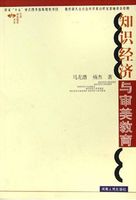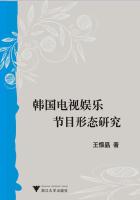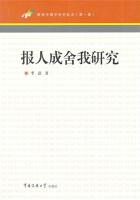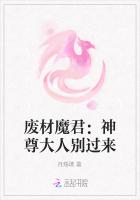Double Focalization in“A Rose for Emily”Wang Ling
1.Introduction to Theoretical Background
“A Rose for Emily”by William Faulkner(1897-1962)is a short story about an eccentric spinster,Emily Grierson,set in the early twentieth century。With the great storyteller,“the telling never becomes the tale……but the design of the telling continually determines secondary fictional effects。”Reed,Joseph。Faulkner’s Narrative。New Haven and London:Yale University Press,1974,p。8.In the story which is“carefully calculated and complicatedly constructed”Reed,Joseph。Faulkner’s Narrative。New Haven and London:Yale University Press,1974,p。19.,an unnamed narrator details the strange circumstances of Miss Emily’s life,including her odd relations with her father,the man whom she loves,the atmosphere of the southern town of Jefferson,and the horrible secret that she hides。In the narration the writer successfully adopts a number of narrative strategies,such as managed and variable narrative distance,the cultivation of variant empathies,and the function of time and timingReed,Joseph。Faulkner’s Narrative。New Haven and London:Yale University Press,1974,p。19.。
According to Michael Toolan,in the process of narrating a story,with almost inevitable and copious specification of time and space,some perspective or other has to be adopted as the vantage point from which the spatiotemporally determinate events are relatedToolan,Michael。Narrative:A Critical Linguistic Introduction。London:Routledge,1988,pp。67-68.。Focalization is used to refer to“this inescapable adoption of a(limited)perspective in narrative,a viewpoint from which events are seen,felt,understood,assessed”Toolan,Michael。Narrative:A Critical Linguistic Introduction。London:Routledge,1988,p。68.。
In the following analysis,Rimmon Kenan’s theory of focalization in narrative will be constantly referred to。Rimmom Kenan not only distinguishes between external and internal focalization,but also develops a typology of focalization which consists of perceptual,psychological and ideological facets。Focalization has the focalizer as its vehicle and the focalized as its object。The focalizer is the agent who orients the presentation through his or her perception while the focalized is what the focalizer perceivesRimmom Kenan,Shlomith。Narrative Fiction:Contemporary Poetics。London:Routledge,1983,p。74.。
2.Analysis of the Three Facets of Focalization in“A Rose for Emily”
William Faulkner himself calls“A Rose for Emily”a ghost story。“The heart of the ghost story is suspense……Revelations are controlled,and the readers’involvement and identification are managed,and they are led along by the storyteller。”Reed,Joseph。Faulkner’s Narrative。New Haven and London:Yale University Press,1974,p。13.The story in“A Rose for Emily”is told by an unspecified first person narrator,apparently one of the residents in the town where Emily lives。However,the narrator almost always speaks using the first person plural pronoun“we”,a strategy to evoke the readers’empathy and belief in the narrator and the story。
It is questionable whether the whole text of“A Rose for Emily”is internally focalized as Rimmom Kenan puts itRimmom Kenan,Shlomith。Narrative Fiction:Contemporary Poetics。London:Routledge,1983,p。78.,or externally focalized,or both。The style of focalization in“A Rose for Emily”will be examined to see how it contributes to some artistic effects。Right from the very first sentence the narrator says,“Our whole town went to her funeral。”Faulkner,William。“A Rose for Emily”,in Malcolm Cowley(ed。),The Essential Faulkner。London:Chatto&Windus,1967,p。1.The opening statement seems to suggest that all the townspeople love Emily,but in actuality such is not the case at all。The writer’s use of an anonymous narrator who has no active role in the story is a subtle way of showing how the townspeople truly regard Emily。The narration of the story in“A Rose for Emily”is from the perspective of the townspeople as a whole,with the narrator as one of them,thus a participant or a character in the narrated events。Therefore,it can be said that the text is internally focalized,or in Rimmom Kenan’s words,the text has internal focalization with a character focalizer as its vehicle。Now the focalizer is different from the narrating agent,as will be seen。
The narrator of“A Rose for Emily”also keeps an eye on different subgroups of the townspeople and refers to them respectively on various occasions as follows:“the Board of Aldermen”,“all the ladies”,“the older people”,“some of the ladies”,“the newer generation”。At this point,the narrator is more like an observer outside the narrated events,perceiving what is happening to Emily and how those subgroups treat Emily。Moreover,the narrator seems to have a very thorough knowledge about Emily since he can easily select the events in Emily’s life,for example,the tax issue and the smell incident when she is in her seventies and early thirties respectively,and present them in the reversed chronology without confusion。All the above facts and some others indicate that“the focalization is felt to be close to the narrating agent”Rimmom Kenan,Shlomith。Narrative Fiction:Contemporary Poetics。London:Routledge,1983,p。74.,so it can also be said that the text of“A Rose for Emily”has external focalization with a narrator focalizer as its vehicle。In the following three subsections the relevant three facets of focalization in“A Rose for Emily”will be examined one by one。
2.1The Perceptual Facet
According to Rimmom Kenan,the perceptual facet of focalization refers to the perception(sight,hearing,etc。)of the focalizer,and should be examined from two aspects,namely space and time。In spatial terms,the external position of the focalizer takes on a bird’s eye view,whereas the internal position of the focalizer takes on the view of a limited observerRimmom Kenan,Shlomith。Narrative Fiction:Contemporary Poetics。London:Routledge,1983,p。77.。
In“A Rose for Emily”,the narrator does not have a panoramic view since he cannot see the inside of Emily’s house,just as he mentions at the very beginning:“……the women most out of curiosity to see the inside of her house,which no one save an old manservant-a combined gardener and cook-had seen in at least ten years”Faulkner,William。“A Rose for Emily”,in Malcolm Cowley(ed。),The Essential Faulkner。London:Chatto&Windus,1967,p。433.。The delayed deion of the inside of Emily’s house is understandable because it also helps to create suspense。The readers may be eager to know what is inside。The outside of Emily’s house is an image of“decay”,and with Emily’s death,the inside of her house cannot be something pleasant,so an atmosphere for a ghost story is gradually constructed。When the inside is focalized,the narrator invites the readers along with him to perceive it from the perspective of the tax delegation。Such a choice of internal focalization adds credibility and objectivity to the narration since it is not the narrator’s own perception。
The room above the stairs in Emily’s house is the spot where the enigma in the story is to be unravelled eventually after so many suspenses and mysteries(the smell,poison,disappearance of Homer Barron,etc。),and hence the point where the ultimate climax of the story lies。Any early revelation of the room would be detrimental to the creation of the rhetorical effects。Therefore,internal focalization is chosen again to allow the readers,along with the participating characters,including the narrating agent,to experience the climax of the story。At this point,the narrator follows the focalizer,moving his viewpoint“from one detail to another,and the readers are given a task of piecing together the separate deions into one coherent picture”Uspensky,Boris。A Poetics of Composition。Berkeley:University of California Press,1973,p。60.。
After Emily’s room is forced open,“we find a tomb,a rose colour,a frozen moment。”Faulkner,William。“A Rose for Emily”,in Malcolm Cowley(ed。),The Essential Faulkner。London:Chatto&Windus,1967,p。130.In perhaps the most brilliantly economic instance of William Faulkner’s exercise of stopped action deion,the objects which the readers see are frozen,each for a moment,like stills spliced into a movie。The writer makes the narrator pile horror upon horror in a tour de force of climactic revelation。The readers see“the man”himself;then he is“in the attitude of embrace”Faulkner,William。“A Rose for Emily”,in Malcolm Cowley(ed。),The Essential Faulkner。London:Chatto&Windus,1967,p。130.;then he is in a nightshirt;then“the indentation of a head on the second pillow;finally a long strand of iron grey hair”Reed,Joseph。Faulkner’s Narrative。New Haven and London:Yale University Press,1974,p。18.。Internal focalization in“A Rose for Emily”not only helps to bring the story to its climax,but also demonstrates the storyteller’s delicate and subtle craftsmanship。
Examined from the temporal aspect,“an external focalizer has at his disposal all the temporal dimensions(i。e。past,present and future)of the story,whereas an internal focalizer is limited to the‘present’of the characters。”Uspensky,Boris。A Poetics of Composition。Berkeley:University of California Press,1973,p。67,p。113.Suppose William Faulkner adopts the implied time of Emily’s death as the opening of the story sequence in“A Rose for Emily”,then the“present”of the principal character as well as that of the text,and other narrated events which happen before Emily’s death,like her father’s death,her love affair with Homer,her buying poison,the smell issue,the visit of the tax delegation,are all considered flashbacks;then the“past”of the protagonist,such as Emily’s funeral,the forced opening of the upstairs room,the discovery of Homer’s death,are all regarded as the“future”of the protagonist。
Because“A Rose for Emily”is narrated in retrospect,the text time is different from the story time,and their differences can be demonstrated by the following evidence。In Part I the narrator begins his narration with Emily’s death,the deion of her frame house and the street,and then flashes back to the time when she was alive:“Alive Miss Emily had been a tradition,a duty。”Faulkner,William。“A Rose for Emily”,in Malcolm Cowley(ed。),The Essential Faulkner。London:Chatto&Windus,1967,p。433.The past perfect tense in the quotation shows that this part of the narrated event is a flashback。What follows is a scene of Emily’s encounter with the tax delegation,which initiates another event in Emily’s life with a clear time specification,which is the smell issue thirty years ago:“That was two years after her father’s death and a short time after her sweetheart……had deserted her。”Faulkner,William。“A Rose for Emily”,in Malcolm Cowley(ed。),The Essential Faulkner。London:Chatto&Windus,1967,p。435.If the above story events can be chronologically arranged as follows:A(the smell issue)—B(Emily’s encounter with the tax delegation)—C(Emily’s death),then the text time is C-B-A,a complete violation of the chronology,or an chronological reversal of the events in time order。It is obvious that the narrator counts time and organizes the events from his own perspective。
The narrator can have all the temporal dimensions of the protagonist at his disposal。In Part III Emily’s purchase of poison is also described with a clear reference to time:“That was over a year after they had begun to say‘Poor Emily’,and while two female cousins were visiting her。”Faulkner,William。“A Rose for Emily”,in Malcolm Cowley(ed。),The Essential Faulkner。London:Chatto&Windus,1967,p。439.So much evidence in the text suffices to show that the narrator is omniscient about Emily,so he is an external focalizer in terms of the temporal dimensions of the story。However,he chooses not to disclose his retrospective understanding,restricting his perceptions to those of the townspeople rather than the narrating agent,so the text has an internal focalizer as well。
In“A Rose for Emily”,William Faulkner employs the element of time to enhance details of the setting and vice versa。By avoiding the chronological order of the events in Emily’s life,the writer first gives the readers a finished puzzle,and then allows them to solve the puzzle piece by piece,step by step。By doing so,he enhances the plot and presents two different perspectives of time held by different characters。The first perspective is in the world of the present while the second is in the world of past tradition。The first perspective is that of Homer and the modern generation while the second one is that of the Confederate soldiers and the older members of the Board of Aldermen。Emily clings to the second view。
The central theme in“A Rose for Emily”is to“let go of the past”。Emily has a tendency to cling to the past and a reluctance to be independent。William Faulkner regards the past not only as a repository of the images of great human effort and integrity,but also as the source of a dynamic evil。He is aware of the pull of the romantic past and realizes that submission to the past romance is a form of death。In“A Rose for Emily”,the writer contrasts the past with the present era。The past is represented by Emily,Colonel Sartoris,the old Negro servant,and the Aldermen who accept the Colonel’s attitude toward Emily and rescind her taxes。The present is expressed chiefly through the words of the unnamed narrator。Homer and the new Board of Aldermen all represent the present era。Referred to as a“fallen monument”in the story,Miss Emily is a“monument”of Southern gentility,representing ideal values of the past,but she is fallen because she has shown herself susceptible to death and decay。The deion of her house as“lifting its stubborn and coquettish decay above the cotton wagons and the gasoline pumps-an eyesore among eyesores”Faulkner,William。“A Rose for Emily”,in Malcolm Cowley(ed。),The Essential Faulkner。London:Chatto&Windus,1967,p。433.reflects a juxtaposition of the past and the present and is an emblematic representation of Emily herself。
Emily has already completely retreated into her world of the past。When the representatives of the new,progressive Board of Aldermen wait on her concerning her delinquent taxes,Emily declares that she has no taxes in Jefferson,basing her belief on a verbal agreement made with Colonel Sartoris,who has been dead for ten years。Just as she refuses to acknowledge the death of her father,Emily now tries to deny the death of Colonel Sartoris,who has given his word,which knows no death according to the local tradition。It is the past pitted against the present-the past with its social decorum while the present with everything set down in the books。
When she is threatened with desertion and disgrace,Emily not only takes refuge in the past world but also takes Homer with her in the only possible manner-death。Emily’s room above the stairs is that timeless“meadow”where living Emily and dead Homer remain together as though even death could not separate them。The story says that death conquers all,but what is death?Death is the past tradition,whatever is the opposite of the present。
Homer Barron,a Yankee who lives in the present,represents the Northerners’attitudes toward the Griersons and the entire South。He is ready to take his pleasure and depart,and apparently unwilling to consider the possibility of defeat。In a sense,Emily conquers time only briefly by retreating into her“rose tinted”world of the past in which death is denied at the same time when it is shown to have existed。The story implies that such a retreat is hopeless since everyone,including Emily,is finally subject to death and the invasion of his or her own world by the clamorous and curious inhabitants in the world of the present。
2.2The Psychological Facet
The psychological facet of focalization is related to the focalizer’s mind and emotions,and determined by the cognitive and emotive orientations of the focalizer towards the focalizedRimmom Kenan,Shlomith。Narrative Fiction:Contemporary Poetics。London:Routledge,1983,p。79.。On the cognitive level,the external focalizer and the internal focalizer take on the form of possessing unrestricted and restricted knowledge respectively。When the external focalizer knows everything about the narrated world but restricts his knowledge,a rhetorical effect is achievedRimmom Kenan,Shlomith。Narrative Fiction:Contemporary Poetics。London:Routledge,1983,p。79.。
As is shown above in the subsection concerning the time component of the perceptual facet,despite the knowledge of the external focalizer or narrator focalizer,the narrator limits his knowledge about the focalized Emily to that of the townspeople。For instance,he knows the source of the terrible smell from Emily’s house according to his retrospective understanding,but he chooses not to divulge it。Instead he follows Judge Stevens’s reasoning that“it’s probably just a snake or a rat that nigger of hers killed in the yard”Faulkner,William。“A Rose for Emily”,in Malcolm Cowley(ed。),The Essential Faulkner。London:Chatto&Windus,1967,p。436.,and withholds the truth。As a result,the smell issue narrated from the internal focalizer’s perspective creates suspense,arouses the readers’curiosity and desire for the truth。Just as the first part of the story presents an unpleasant atmosphere of death,decline and decay,the terrible smell also suggests something sinister。The same is true of the poison case。The narrator definitely knows what Emily would use the poison for again from his retrospective knowledge,but he chooses to follow the townspeople’s view:“……so the next day we all said,‘She will kill herself ’。”Faulkner,William。“A Rose for Emily”,in Malcolm Cowley(ed。),The Essential Faulkner。London:Chatto&Windus,1967,p。440.The unknown reason for Emily’s buying poison thus helps to build up a kind of horrible,fearful atmosphere for the ghost story。
In both the smell issue and the poison case,the narrator tells what the townspeople perceive instead of what he himself perceives,so he changes from the external focalizer to the internal one。According to Rimmom Kenan,“the choice of an internal focalizer lends plausibility to the withholding of information and creates shocking effects when the discovery of Homer’s corpse is narrated。”Rimmom Kenan,Shlomith。Narrative Fiction:Contemporary Poetics。London:Routledge,1983,pp。78-79.Therefore,it is obvious that William Faulkner deliberately selects two different types of focalization out of rhetorical considerations。Actually he has carefully calculated what to tell,how to tell,and when to tell in narrating the story。
Regarding the emotive component of the psychological facet,the subjectivity of the internal focalizer can be observed from several perspectives。First of all in Part I,Emily’s house is described from the perspective of the townspeople(including the narrator)as follows:the house is“lifting its stubborn and coquettish decay above the cotton wagons and the gasoline pumps”,with its“cupolas and spires and scrolled balconies in the heavily lightsome style of the seventies”Faulkner,William。“A Rose for Emily”,in Malcolm Cowley(ed。),The Essential Faulkner。London:Chatto&Windus,1967,p。433.。The deion indicates an obvious attitude of the focalizer(the townspeople as a whole)towards the focalized Emily,who is here portrayed as an isolated,out dated and decadent image。
Then from the perspective of the tax delegation as a representative of the new generation,the deion of the inside of Emily’s house is subjective,too:“……a dim hall……It smelled of dust and disuse……when the Negro opened the blinds of one window,they could see that the leather was cracked;and when they sat down,a faint dust rose sluggishly about their thighs,spinning with slow motes in the single sunray……”Faulkner,William。“A Rose for Emily”,in Malcolm Cowley(ed。),The Essential Faulkner。London:Chatto&Windus,1967,p。434.The old,broken,dusty house is viewed as a symbol of the decline or decay of the older generation with Emily as their representative。“She looked bloated,like a body long submerged in motionless water,and of that pallid hue。Her eyes,lost in the fatty ridges of her face,looked like two pieces of coal pressed into a lump of dough as they moved from one face to another。”Faulkner,William。“A Rose for Emily”,in Malcolm Cowley(ed。),The Essential Faulkner。London:Chatto&Windus,1967,p。435.The unforgettable deion of Emily signifies that the protagonist is separated from time,fashion and encroachment,and regarded as an isolated,lifeless still point,a walking corpse in the rushing world。
Emily’s love affair with Homer also receives different responses from different subgroups of the townspeople。Firstly,it is viewed from the perspective of“the ladies”:“At first we were glad that Miss Emily would have an interest,because the ladies all said,‘Of course a Grierson would not think seriously of a Northerner,a day labourer’。”Faulkner,William。“A Rose for Emily”,in Malcolm Cowley(ed。),The Essential Faulkner。London:Chatto&Windus,1967,p。438.Then,it is discussed from the older people’s perspective:“……older people who said that even grief could not cause a real lady to forget noblesse oblige-without calling it noblesse oblige。They just said,‘Poor Emily。Her kinsfolk should come to her’。”Faulkner,William。“A Rose for Emily”,in Malcolm Cowley(ed。),The Essential Faulkner。London:Chatto&Windus,1967,p。438.
Afterwards when the townspeople come to know that Homer is not a marrying man,and that Emily is still with him in the glittering buggy“with her head high”,it is seen from the perspective of“some of the ladies”:“Then some of the ladies began to say that it was a disgrace to the town and a bad example for the young people……at last the ladies forced the Baptist minister……to call on her。”Faulkner,William。“A Rose for Emily”,in Malcolm Cowley(ed。),The Essential Faulkner。London:Chatto&Windus,1967,p。440.Based on the above emotive orientation of“the ladies”,“older people”,and“some of the ladies”,it is evident that Emily is emotionally distanced and alienated from the townspeople。She is the attention target of the townspeople because of her“right and mighty”,“real lady”aristocracy。Moreover,with the help of his string of“wes”in the fourth and fifth parts,the narrator gains the readers’allegiance and their empathy with the attitudes of“our town”。However,when Emily’s tragic fate is revealed in the end,the empathy with“our town”is instantly converted to that with Emily,the hitherto distanced individual。Therefore,the readers’conventional empathy with the first person narrator turns out to be only a prelude to their ultimate sympathetic response to“the isolated subject”Reed,Joseph。Faulkner’s Narrative。New Haven and London:Yale University Press,1974,p。19.。The cultivation of variant empathies is largely attributable to the choice of internal focalization in“A Rose for Emily”。
2.3The Ideological Facet
The ideological facet of focalization,which is often referred to as“the norms of the text”,consists of“a general system of viewing the world conceptually,in accordance with the events and characters of the story which are evaluated”Uspensky,Boris。A Poetics of Composition。Berkeley:University of California Press,1973,p。8.。The ideology of the dominant focalizer or narrator focalizer is the authoritative one from which other ideologies in the text are evaluated。Rimmom Kenan,Shlomith。Narrative Fiction:Contemporary Poetics。London:Routledge,1983,p。8.
Since the story in“A Rose for Emily”is told by a first person narrator who speaks as“we”,holding a kind of collective view and gradually gaining allegiance from the readers,the readers tend to adopt as their own the narrator’s view of Emily or the townspeople’s collective view of Emily。Meanwhile,other views also exist because of the various subgroups among the townspeople,such as“the young”,“the old”,“the Board of Aldermen”,“the ladies”,“some of the ladies”,etc。The subgroups are“definite with their characteristic opinions”Reed,Joseph。Faulkner’s Narrative。New Haven and London:Yale University Press,1974,p。15.about Emily,and their views certainly influence the judgement of the readers。However,most of the subgroups’views are negative while the narrator’s view seems to be more objective,comprehensive,and thus more acceptable。The negative views help to alienate Emily from the townspeople and to contrast Emily with them。
3.Conclusion
In the perceptual facet,the short story“A Rose for Emily”by William Faulkner has internal focalization,which limits the spatial perceptions to those of the participating characters,or the townspeople,in an attempt to build up horror or fear-an atmosphere for a ghost story。Though the narrator has all the temporal dimensions of the heroine at his disposal and appears to be an external focalizer,he chooses to withhold the truth by restricting his perceptions to those of the townspeople in order to create suspense and arouse curiosity in the readers。The same is true of the cognitive component of the psychological facet。On the level of the emotive component of the psychological facet,the text is internally focalized。The relations between Emily and the townspeople are depicted,and the readers’empathy is first established with the townspeople but then converted to empathy with Emily。As a result,some unexpected effects are achieved,and Emily’s tragic fate is highlighted。In terms of the ideological facet,though various ideologies are offered both explicitly and implicitly,the narrator’s ideology is the dominant one。
To sum up,the style of focalization in the text of“A Rose for Emily”is no simple scheme。On the contrary,it is subtly handled by William Faulkner。The text has both internal and external focalization,and the presence of both types serves the writer’s rhetorical purposes to create suspense and to arouse empathy and hence belief from the readers。
The range of narrative techniques used by William Faulkner in“A Rose for Emily”is remarkable。He would never step between the characters and the readers to explain,but let the characters explain themselves and hinder as little as possible the readers’direct experience of the work of literature。He deliberately broke up the chronology of his narrative by juxtaposing the past with the present。William Faulkner was good at presenting multiple points of view。Instead of having one person or the main character tell the story,he adopted the collective“we”that represents all the townspeople and their version of the story。The collective narrator gives the story more life because the readers are less concerned with what or who the narrator is。
The plot structure of“A Rose for Emily”is different from that of most of the stories that one reads。Most stories start from the beginning of the tale,go through a certain period of time,and normally end in a resolution。On the contrary,“A Rose for Emily”begins at the end of the story and tells the plot through various flashbacks。Instead of following the normal plot structure(the exposition,rising action,climax,falling action,and the resolution),“A Rose for Emily”includes those components throughout the tale in a precariously different order。The upsetting ending gives the story depth and air of reality while the variation of the plot structure gives it mystery。All in all,thanks to William Faulkner’s ingenious techniques in writing,“A Rose for Emily”is a terrific literary work。
References:
[1]Bleikasten,Andrew。The Most Splendid Failure。Bloomington:Indiana University Press,1976.
[2]Faulkner,William。Faulkner in the University:Class Conferences at the University of Virginia 1957-1958,ed。Frederick L。Gwynn and Joseph L。Blootner。New York:Random House,1965.
[3]Faulkner,William。“A Rose for Emily”,in Malcolm Cowley(ed。),The Essential Faulkner。London:Chatto&Windus,1967.
[4]Matthews,John。The Play of Faulkner’s Language。Cornell:Cornell University Press,1982.
[5]Messent,Peter。New Readings of the American Novel。Edinburgh:Edinburgh University Press,1998.
[6]Reed,Joseph。Faulkner’s Narrative。New Haven and London:Yale University Press,1974.
[7]Rimmom Kenan,Shlomith。Narrative Fiction:Contemporary Poetics。London:Routledge,1983.
[8]Toolan,Michael。Narrative:A Critical Linguistic Introduction。London:Routledge,1988.
[9]Uspensky,Boris。A Poetics of Composition。Berkeley:University of California Press,1973.The Significance of Names in Toni
Morrison’s Novels本文受美联基金会出国进修项目、云南省教育厅青年教师科研基金项目(编号:by0182E)、云南大学人文社会科学研究项目资助。Wang Jinmei Typically names function as designators to distinguish one person or one thing from others。In her novels,Toni Morrison depends on the names of characters,places and titles to build their characteristics and give the reader a deeper understanding of characters,themes。This paper aims to analyze some names of characters,locations and the novels’titles,to explore the significance of naming in delineating the characters’personalities and in bringing to light the thought-provoking themes of the novels。
Naming usually plays a dynamic role in shaping identity。
To name the characters,Toni Morrison takes advantage of allusions,from classical history or mythology(Valerian,Ajax,Circe),Judeo Christian sources(Ruth,First Corinthians,Hannah,Shadrack)to African folklore。She names some characters ironically or symbolically to bring out the depth of their personalities。The ironic naming of characters can be seen in the case of the Breedlove,Peace,Wright,and Dead families。
In The Bluest Eye,the two words“breed”and“love”are intertwined in the name。Generally“breed”is a biological phenomenon,a physiological occurrence,while“love”is a social,religious,or spiritual phenomenon。Actually what the Breedlove family lacks is love;self hatred marks this family:
You looked at them and wondered why they were so ugly:you looked closely and could not find the source。Then you realized that it came from conviction,their conviction。It was as though some mysterious all knowing master had given each one a cloak of ugliness to wear,and they had each accepted it without question。The master had said,“You are ugly people。”They had looked about themselves and saw nothing to contradict the statement;saw,in fact,support for it leaning at them from every billboard,every movie,every glance。“Yes,”they had said,“you are right。”And they took the ugliness in their hands,threw it as a mantle over them,and went about the world with it Toni Morrison,The Bluest Eye(New York,1970),34.。
There is no love among the family members。Pauline Breedlove is“Mrs。Breedlove”even to her husband and children,but“Polly”to the white family。Being born into this loveless family marked by self hatred,Pecola Breedlove is humiliated by schoolmates and disdained by other black people。Even worse,she is raped by her own father。In this novel,the biological occurrence does not bring about love,but tragedy Pecola’s madness。
In Sula,Sula Peace,who is not as her name suggests,is rebellious and upsets the black community。When she is eleven years old,she cuts off the tip of her finger to demonstrate to a gang of threatening boys what she can do to them if she can do that to herself。She swings a child around by the wrists and half intentionally lets him slip out of her grasp into the river,where he drowns。In the shadows of her porch,she watches in an“interested”way while her mother burns to death。The adult Sula refuses the conventional roles of wife,mother,and dutiful family member。“I don’t want to make somebody else。I want to make myself,”Toni Morrison,Sula(New York,1973),92.she says when Eva asks her when she is going to get married and have children。Sula puts Eva in a nursing home,and even hurts her best friend,Nel,by casually sleeping with her husband,who then takes the opportunity to desert his wife and their three children。The betrayal of the act itself is surpassed by Sula’s inability to comprehend why she might have left him alone for the sake of friendship。She retorts to Nel’s accusations:“I didn’t kill him,I just fucked him。If we were such good friends,how come you couldn’t get over it?”Sula,145.Sula also perceives the Bottom people as objects of contempt and actively shames them。When Sula asks Nel how she is and Nel says that she must be“all right”because she“ain’t strangled nobody yet,”Sula remarks that half the people in the town need to be killed while the rest are a“drawn out disease”Sula,96.。
The name Wright suggests conformity to socially accepted values and codes of behavior。Unlike Sula Peace,who is“a rule breaker,a kind of law breaker,a lawless woman”,Nel Wright knows and believes in the values and the laws of the community。If we ignore the“r”instead of the“w”,the name implies conformity to white norms。Helene Wright,Nel’s mother,is a pillar of middle class respectability in the Bottom community,who carries with her a deep and inherited sense of shame。The daughter of a Creole whore,Helene was raised in New Orleans“under the dolesome eyes of a multicolored Virgin Mary”by her respectable grandmother,who counseled Helene“to be constantly on guard for any sign of her mother’s wild blood”Sula,17.。
In repudiating her mother’s“wild blood”and becoming a proud and utterly respectable middle class woman,Helene attempts to escape the sexual shame of black women。Bell Hooks,remarking on the humiliations endured by black women in American society,describes the still common tendency of whites to view black women as sexually loose and thus as not worthy of respect,this shaming stereotype of African American women being historically rooted in the slavery system in which whites“justified the sexual exploitation of enslaved black women by arguing that they were the initiators of sexual relationships with men”Stephen Steinberg,The Ethnic Myth:Race,Ethnicity,and Class in America(New York,1981),52.。Helene defends against her inherited shame by becoming an“impressive woman”who wins all social battles with presence and a conviction of the legitimacy of her authority。Abhorring the circumstances of her own birth to a Creole prostitute,and in order to“be as far away from the Sundown House as possible”Sula,15.,she also exchanges her name,Helene Sabat,with its exotic associations with the witch’s Sabbath,for Helene Wright,with its implications of both“rightness”and“whiteness”。Here the choosing of the name can also represent a rejection of black race and culture。
Dead is not the true name of the Dead family in Song of Solomon,who are dead in the spiritual sense as well as in name。The name of Macon Dead is created by a slip of the pen。Failing to fill the information in the correct boxes,the Yankee clerk at the Freedmen’s Bureau takes the place of origin as the first name,writing the condition of the father in the box for the surname。Though one point about this history of naming is that a careless drunk official has the power to change the name of a family,another more significant point is that the new name further emphasizes the death of the father。The fact that Macon,Jr,has inherited this false name highlights the way in which he is a grotesque distortion of his father。
His father’s real name was Jake,but his son is more like his biblical namesake,crafty and patriarchal。For Jake,property was not mere property,but the symbol of a bond between the land and the community。Macon Dead,Jr,is a grotesque fairytale character whose lust for gold has made him one of the most affluent and most hated black property owners。However,his name epitomizes how much his fixation with white defined respectability and has cost him in personal,social and spiritual terms,even though his accumulation of wealth is part of his attempt to overcome oppression,prejudice,poverty and lack of a formal education。Guitar makes explicit the connection between the imposed name,Dead,the appropriation of white values,and a more generalized and pervasive white control:“White men want us dead or quiet-which is the same thing as dead They want us,you know,‘universal’,human,‘no race consciousness’”Toni Morrison,Song of Solomon(New York,1977),222.。In the Deads’house,the women cower and Milkman is bored。Ruth suffers under Macon’s rule,her creativity stunted,her flowers dying。
The two daughters,Magdalene called Lena and First Corinthians,pine for lack of love and life,since no man in the community is good enough for Macon Dead’s daughters。According to the standard black middle class narrative,the college educated Corinthians,who had been taught how to be“an enlightened mother and wife,”should have been able“to contribute to the civilization-or in her case,the civilizing-of her community,”and she should have been“a prize for a professional man of color。”But despite her education and class privileges,she remains unmarried,for such men prefer wives unlike the“elegant”Corinthians,who is accustomed to black middle class life and thus lacks the necessary“ambition”,“hunger”,and“hustle”such men look for in a wifeSong of Solomon,188.。The granddaughter of the distinguished Dr。Foster,the forty four year old Corinthians ends up working as a maid for a white woman。In the genealogy of the Deads,the trauma of paternal loss reveals one father who flew away and one who died violently at the hands of whites while trying to make good in America。The two instances record different responses to life in racist America,each of which entails traumatic consequences-Solomon miraculously flies off,becoming a symbol of transcendence and escape,but bequeathing also a legacy of bereavement,loss and forgetting;Jake stands his ground but is cut down,leaving his family similarly bereft。Both modes raise the question of how black men in America survive and how they position themselves in relation to dominant social and political structures。
Milkman’s nickname has ignominious origins;because his mother breastfed him for much longer than normal it was given to him by Freddie,the janitor。Indeed,his name suggests infancy and the egocentricity of the young child,from which Milkman has to develop。In the early part of the novel he tries to avoid commitment。At the age of thirty one,Milkman is still a narcissist;his life is stagnant and his growth suspends。Once overnourished by his mother’s milk,he fails to grow until the interjection of Lena’s accusation that he has victimized others with his egotism。The name also serves to exacerbate the tension between Milkman and his father。Although his father Macon doesn’t understand the origins of the name he recognizes that it sounds“dirty,intimate,and hot”thereby reminding him of his wife’s abnormal fixation for her father and the passion which he denies in himself and in his children。His son’s name compounds the shame of his own name。
Another symbolic and significant name in Song of Solomon is Pilate。African values and African culture,exemplified in Pilate,are privileged in the text。Pilate has all the qualities Morrison associates with an ideal African woman:She has stature,and strength。Pilate is tall,as tall as her brother Macon,with black skin and wine colored lips;moreover,she constantly has a“chewing stick”between her lips,much like a West African market woman。Her father’s initial selection of the name is auspicious:“He saw in them the letters a large figure that looked like a tree hanging in some princely but protective way over a row of smaller trees。”Song of Solomon,18.Indeed,Pilate embodies this protective function,so that when Milkman sees her for the first time,she looks like“a tall black tree”Song of Solomon,38.。Finally,Pilate’s father accepts the name as a form of heroic anathema(using the name of Christ’s betrayer)addressed to a God。
Thus,the contradictory aspects of Pilate’s identity-protectiveness,authoritativeness,and marginality with the parodic surcharge of“pie late”Song of Solomon,286.—are enacted in her life story,and she preserves the material trace of that triple invocation in a casket made out of her mother’s snuffbox containing the paper on which her father had painstakingly copied out her name。For the rest of her life,she wears the name(talisman)in her left earlobe as a constant reminder of her original dedication。
In contrast to the passive Ruth Dead,Milkman’s biological mother,Pilate is his spiritual mother,responsible for his very existence:When“only a miracle”could have produced a pregnancy in Ruth,Pilate had given her sister in law a concoction that had made her briefly both fertile and sexually irresistible to her cold husband,thus presiding over Milkman’s very conception。She prevented Macon from killing the baby before it was born and aided Ruth during the delivery。As his spiritual midwife,Pilate enlarges the boundaries of Milkman’s suffocating world by introducing him to the sky,“so that from then on when he looked at it,it……was intimate,familiar,like a room that he lived in,a place where he belonged。”Song of Solomon,207.
Eventually Milkman discovers the true family history through this woman who,though she lives in the present,is vitally in touch with the past。When he hears the name pronounced,Macon understands it as pilot,“like a riverboat pilot”Song of Solomon,19.。Milkman’s true inheritance,black cultural identity and ancestry,is provided by his aunt,Pilate。She becomes quite literally Milkman’s pilot or guiding force。She challenges his indifference and initiates him into the legacy of which black womankind are the guardians,a legacy of wisdom and beliefs。In“Rootedness,”Morrison states that Pilate functions as the ancestor for Milkman,and it is under her guidance that he becomes responsible and humane。Pilate’s house reflects her African heritage in other ways。Her house appears to Ruth as“an inn,a safe harbor”,and“true to the palm oil that flowed in her veins。”Pilate offers both food and hospitality to all who enter。Even Macon,who deserted his sister,sees the house as a place of music,warmth,and caring,not realizing that he has destroyed the music in his own house。The two houses stand in stark contrast。
In Sula,Chicken Little is an important character。The name suggests childhood and short life。His death is the novel’s central symbol of loss。One moment he is there,laughing as Sula swings him,holding him by the wrists;the next he is gone:“The water darkened and closed quickly over the place where Chicken Little sank。”Sula,61.
Chicken Little’s sky falls in,recalling the hapless chicken of the barnyard fable who thought the sky was coming down on his head when he was hit by an acorn。The text emphasizes how the women mourners relate to the event by identifying with the child as“innocent victim”。They are reminded of the“oldest and most devastating pain there is:not the pain of childhood but the remembrance of it”Sula,65.。The funeral foregrounds childhood as a time of vulnerabilities,pain and loss,just as,we might say,Chicken Little’s death is a symbol of Sula’s own childhood hurt and loss。Shortly before she and Nel go swimming,Sula overhears her mother’s conversation with friends about the problems of child rearing。Hannah’s comment can be interpreted as a determining factor in Sula’s personality formation。The moment functions as a turning point for Sula。What Hannah says is that children are a nuisance。Her friends agree-they may love their children but they do not like them。Hearing her mother’s pronouncements,Sula is stung,immersed in“dark thoughts”until Nel calls to her to go swimming。Chicken Little,then,may be seen as the childhood that slips from Sula’s grasp that day。Chicken Little’s death may represent the pain of losing innocence and childhood,but it also represents,the permanence of childhood captured and secured by death。
Pauline Breedlove in The Bluest Eye provides another example of Morrison’s concern with the significance of naming。Known as“Mrs。Breedlove”even to her husband and children,she is“Polly”to the white family for whom she works,and the diminutive name is totally appropriate in this case,for Pauline has diminished herself through her obsequious dedication to whiteness。Thus nicknames are often appropriate in Morrison’s novels,denoting truths about character,revealing secrets,determining how a person is viewed by a particular community。Elihue Micah Whitcomb,also in The Bluest Eye,is called Soaphead Church by the community,a name mysterious to him but nevertheless reflective of his perverted sexual preference for“clean”little girls:“His sexuality was anything but lewd;his patronage of little girls smacked of innocence and was associated in his mind with cleanliness。He was what one might call a very clean old man”The Bluest Eye,132.。















